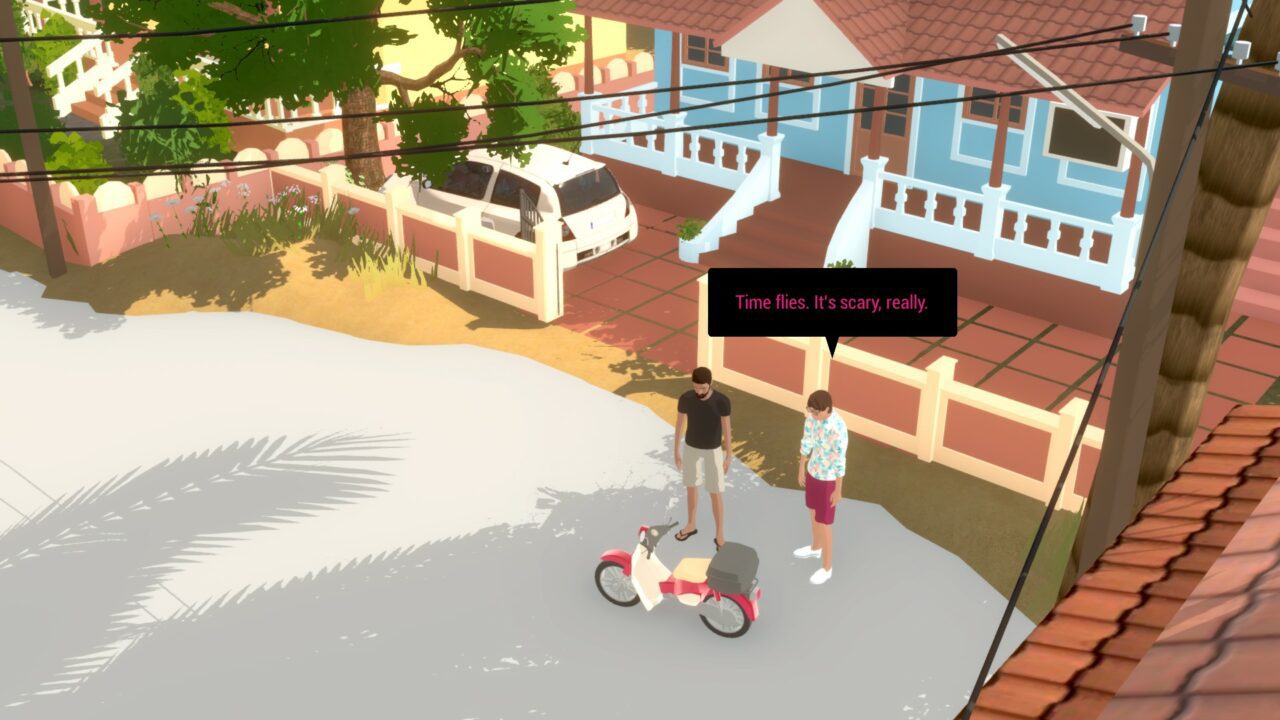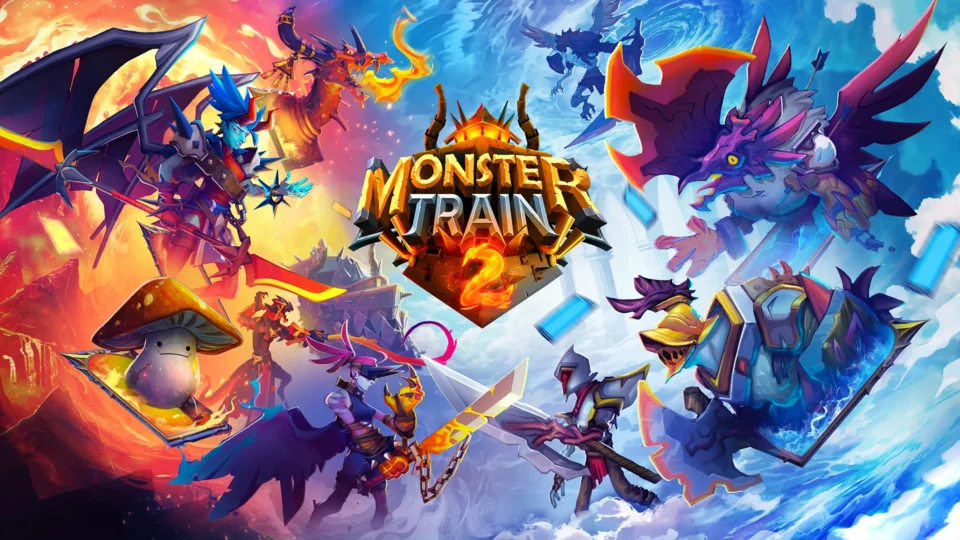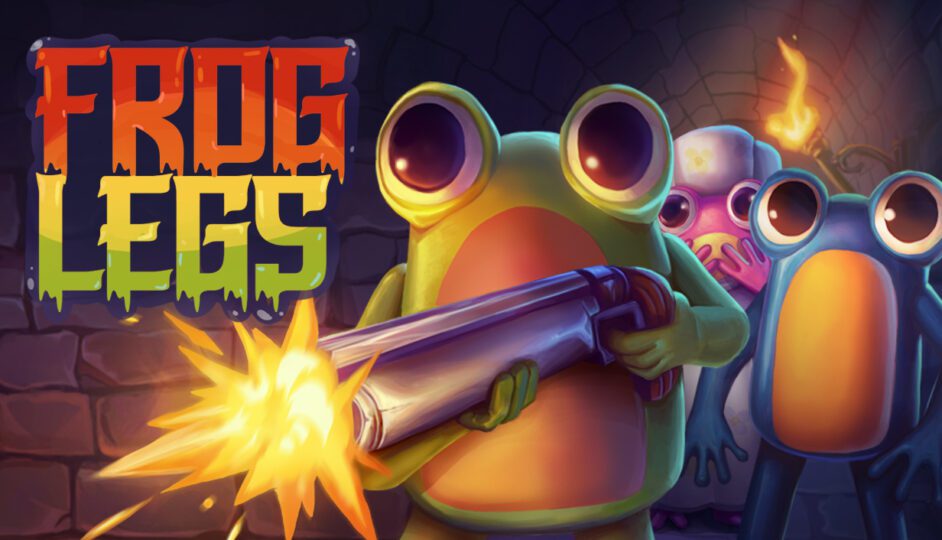Forgotten Fields is a homely slice-of-life game about a writer who can’t write, a simple premise that from the offset can create a connection with the player, as who hasn’t hit that block when it comes to creativity at some point? Returning to his childhood home for the last time, protagonist Sid struggles against a looming deadline and dips in and out of his own fantasy world. It’s an upbeat sort of a game; gentle, predictable, slow, but ultimately cheerful. Forgotten Fields isn’t a walking simulator so much as it is a, relaxing break from the chaos, the digital equivalent of just taking a moment to sit under a tree with a story and some quiet.
Starting life as a Kickstarter project, and based around the developer Armaan Sandhu’s real-life experience, Forgotten Fields transports the player to the Indian state of Goa, where Sandhu grew up. In his own life, returning to his childhood home allowed him to overcome writer’s block and finish his first game, Rainswept.
For what it lacks in polish and excitement, it makes up for somewhat in an indeterminable charm. Maybe it’s the gentle music, the simple style, or the fact that playing it felt like reading a bedtime story, but there was something that kept pushing me forward. It isn’t a particularly attractive game, and some parts feel a little wooden, but the dialogue is simple enough and the story is a sweet little tale told from an interesting cultural perspective. It promises to be “a story focused on nostalgia and time that is sure to linger in your mind long after you’ve finished the game”, but comes up a little short – I’m not sure it’ll linger for long.
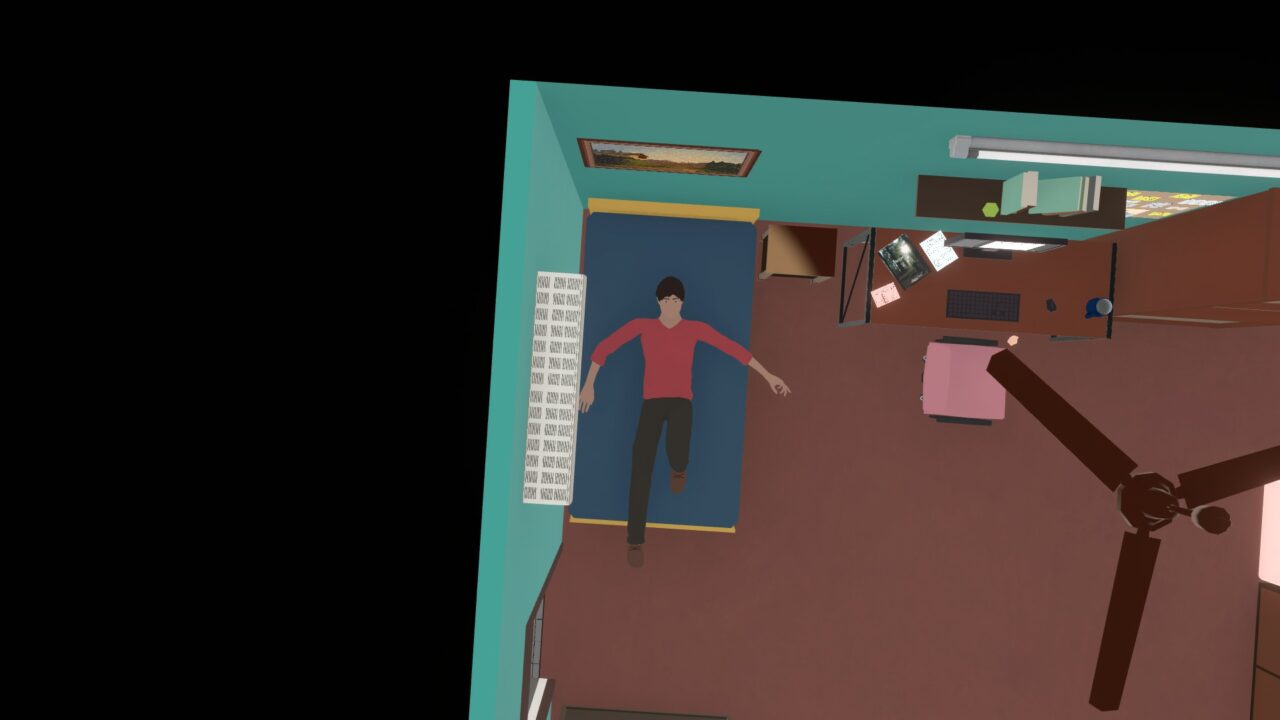
Initially this review was hampered by a few crashes and bumps, and multiple updates from the Forgotten Fields team, the game began to run a lot better. It seems unusually demanding for a game of this simplicity and could maybe do with further optimisation, but the work ethic of the developer can’t be faulted. Chances are if you find a bug, they’re already on their way to fixing it.
When it comes to accessibility, there is no voice acting, as this was a stretch goal that was missed on Kickstarter but Forgotten Fields is still able to tell the story it wants to tell without this being a hinderance, clear subtitles on a black background are used for most interactions, which allows the text to be separated from the background for ease of reading. Sadly no closed captions were available, and there were some moments were sounds like the ringing of a doorbell for example, had no subtitle prompt. This combined with it not always being obvious which objects can be interacted with, could cause frustration or hinder the experience.
On the better side of things, controller binding seems to be reasonable, and if you do end up in a situation where you cannot figure out the next narrative step there is an option to show all available interactive hotspots.
My own preferred tactic for tackling a bout of writer’s block is to stick on some familiar tunes and play something I’ve played a million times. There’s something about returning to a time when you could write that slowly massages your consciousness back out of the panicked rigidity of a deadline-addled brain.
The familiarity of these emotions went some way toward endearing me to Sid, the protagonist. He is a writer who has lost his thread, and we meet him staring up at the ceiling procrastinating hard. He seems to be a gentle chap, surrounded by friends who don’t see as much of him as he would like, and situated in the heart of a beautiful community. Forgotten Fields prides itself on lo-fi, low-stress storytelling centred on a man who stresses about his story.
Lo-fi is a difficult concept – deceptively so. For it to carry well commercially, there is a requirement that something look and feel offhand, but in actuality is rather acutely refined. Simplistic games like Untitled Goose Game, which gave us all so much fun last year, work on this basis. They are low-poly, easy to grasp, and conceptually clear – to the player they appear perhaps an easy feat. But the production of something that looks so effortlessly… well, effortless, is not without… effort. (Much like this review, clearly). In UGG, the characters move smoothly and interact with gravity and the world around them as they should. The shapes are clear and attractive, with colours that work together and a palpable energy in the performance of the most basic shapes.
Forgotten Fields is not up to this standard, which is a big part of why I feel the longevity of the game may not live up to the developer’s hopes. It is lo-fi, but in a more genuine sense, rather than as a design aesthetic. The characters have difficulty moving, and are not especially attractive, the objects around you often clip and jar into your character, and the UI can be needlessly frustrating. Sometimes characters just sort of… hover, and there is no real emotion in their body language or depth to the world around them. Unfortunately, this relatable element is the key to a successful lo-fi game. There has to be some sort of energy emanating from the art that sets it apart or at least a polished and reactive setting.
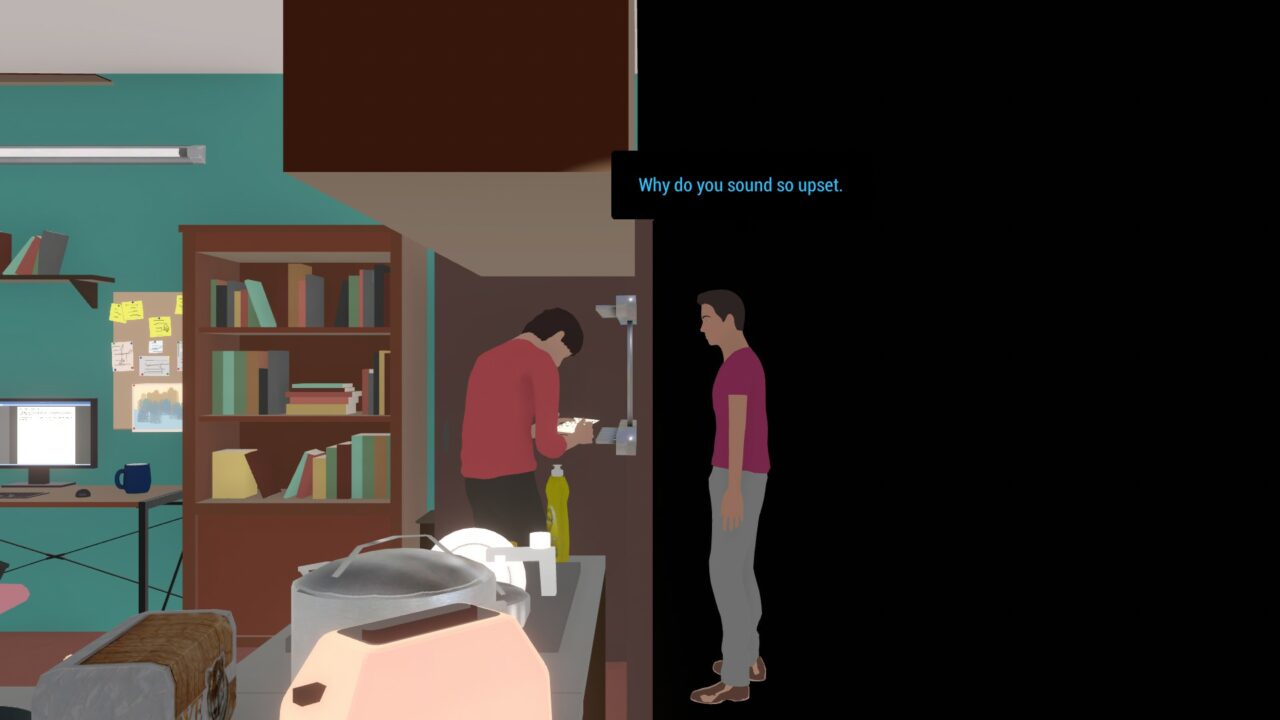
That’s not to say the game is without attractive elements. The journey through Goa is a real treat at times and makes you realise just how much of your gaming life you’ve spent exclusively in the West. It is nice to take a break from shooting everything in sight or hiding in cupboards or building immense fortresses to just… vibe. I’m not sure this game is as relaxing as some story-driven narratives, purely because of those rough edges. It can sometimes be irritating, jarring, or simply too slow – which detracts from the overall calm. When a game relies on story and atmosphere over anything else, the pacing must be tight, and Forgotten fields lets go of the reins here and there.
There are no real narrative decisions, the game plays on rails and directs you to the next stage by gentle prompts in the surrounding area. These can sometimes be a little easy to miss, but it is perhaps the most enjoyable element of the game searching for everything and everyone you can interact with. It doesn’t quite feel like a walking simulator, due to the unusual top-down perspective and interactive elements, such as a scene where you fix a bike in first-person mode. Steeped in nostalgia that even warmed my cold, dead heart a little, the story at the centre of Forgotten Fields is full of soul. As it progresses, you realise how soft and warm this environment is, and lean into it, yielding to the comfort within.
Between these winding trips down memory lane, Sid experiences snippets of inspiration in the form of imaginative little mini-games. Crafting his novel is more than just putting pen to paper, you join him in imagining the detail and spirit of the characters and situations. I’m not sure how well these scenes work as mini-games, but they are a sweet and unusual way to explore Sid’s consciousness a little more.
Some of the camera options feel unnecessary and potentially too big for their boots. First-person mode is disorientating, and being able to angle the camera yourself only goes to show weaknesses in the overall scripting. For example, in one scene I turned the camera and could see a character that had previously walked out of the house, lurking motionlessly behind the original field of view. The revolutions of the camera are also blurry and incredibly fast. I had to stop moving it eventually as I was feeling car-sick. It’s a small quibble, but I don’t think the developers had to labour over this as it doesn’t seem a necessary part of the game. I left the camera where it was the majority of the time and don’t feel it detracted from the experience.
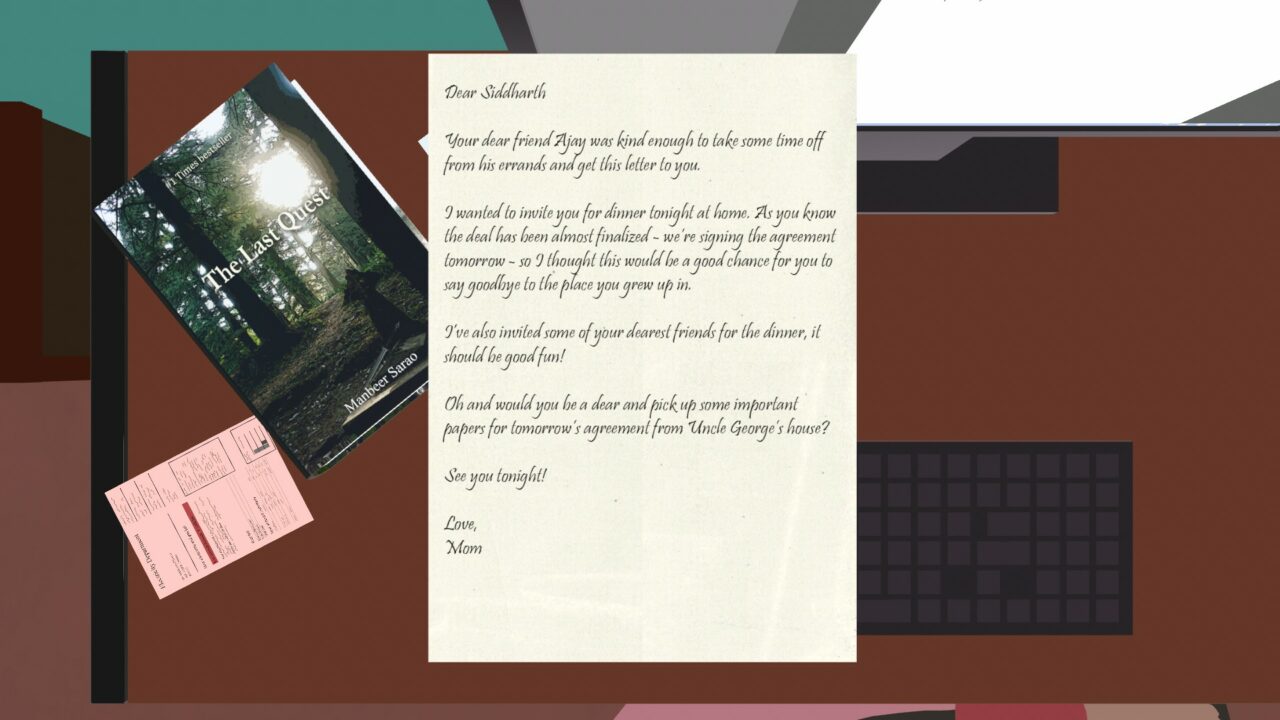
The dialogue is a little clunky and cumbersome, but it has an undeniable warmth that seems to suit each character. It is, unfortunately, another example of the mixed feelings I have about this game. From the outset I was concerned by the graphical difficulties, the unfinished feel, the disparity I felt between myself and the characters… But it is hard to be overly critical of a game produced on a meagre budget of £10,000 by a tiny team of one. I feel like this is a game made with passion and enthusiasm, and that cannot be overlooked, for all its faults.
I wasn’t drawn to this game, personally, but I’ve seen plenty online who claim it calmed them and gave them a gentle experience that will stay with them. I don’t know about that, but I do know that in playing this game I grew in respect for the developer and his dreams. He made something we can all relate to, at times, and a game that eschews the cliche of American cities or rural England for a peaceful and vibrant town in India.
I want to see more of this. I can see this game appealing to people, but I do resent the fact that one-man teams can only raise so much money. I believe with a little more funding, and perhaps a slightly bigger team (two people? Three?) Forgotten Fields would be a thoroughly different and far more rewarding experience. It needs polishing before it can be truly relaxing – although that is me speaking as a literal video game critic so perhaps my fuse is a little short.
Although I do feel a little short-changed by some of the unpolished elements, I would still propose this game to anyone looking for a real warming experience that doesn’t demand too much from the player. In its current state, Forgotten Fields plays a little like a demo, and I think with certain tweaks and attention to detail it could offer a lot more. Even in this imagined prime state, it may be a little too slow for some however. It is a story told with pictures, a short game with little new to add, but potentially a worthwhile trip down memory lane.
